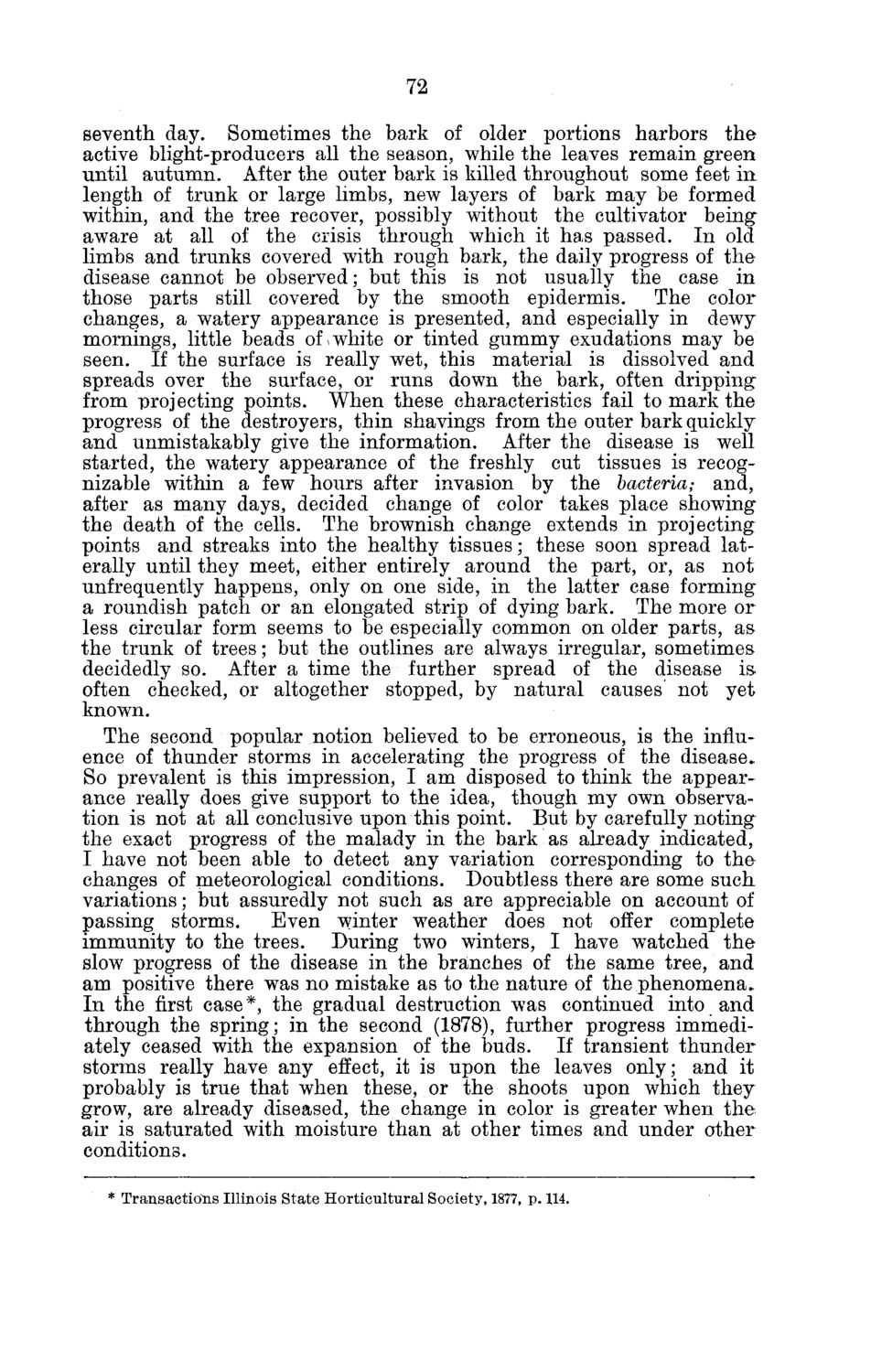| |
| |
Caption: Board of Trustees Minutes - 1880
This is a reduced-resolution page image for fast online browsing.

EXTRACTED TEXT FROM PAGE:
72 seventh day. Sometimes the bark of older portions harbors the active blight-producers all the season, while the leaves remain green until autumn. After the outer bark is killed throughout some feet in length of trunk or large limbs, new layers of bark may be formed within, and the tree recover, possibly without the cultivator being aware at all of the crisis through which it has passed. In old limbs and trunks covered with rough bark, the daily progress of the disease cannot be observed; but this is not usually the case in those parts still covered by the smooth epidermis. The color changes, a watery appearance is presented, and especially in dewy mornings, little beads of white or tinted gummy exudations may be seen. If the surface is really wet, this material is dissolved and spreads over the surface, or runs down the bark, often dripping from projecting points. When these characteristics fail to mark the progress of the destroyers, thin shavings from the outer bark quickly and unmistakably give the information. After the disease is well started, the watery appearance of the freshly cut tissues is recognizable within a few hours after invasion by the bacteria; and, after as many days, decided change of color takes place showing the death of the cells. The brownish change extends in projecting points and streaks into the healthy tissues; these soon spread laterally until they meet, either entirely around the part, or, as not unfrequently happens, only on one side, in the latter case forming a roundish patch or an elongated strip of dying bark. The more or less circular form seems to be especially common on older parts, as the trunk of trees; but the outlines are always irregular, sometimes decidedly so. After a time the further spread of the disease isoften checked, or altogether stopped, by natural causes' not yet known. The second popular notion believed to be erroneous, is the influence of thunder storms in accelerating the progress of the disease.. So prevalent is this impression, I am disposed to think the appearance really does give support to the idea, though my own observation is not at all conclusive upon this point. But by carefully noting the exact progress of the malady in the bark as already indicated, I have not been able to detect any variation corresponding to the changes of meteorological conditions. Doubtless there are some such variations; but assuredly not such as are appreciable on account of passing storms. Even winter weather does not offer complete immunity to the trees. During two winters, I have watched the slow progress of the disease in the branches of the same tree, and am positive there was no mistake as to the nature of the phenomena. In the first case*, the gradual destruction was continued into and through the spring; in the second (1878), further progress immediately ceased with the expansion of the buds. If transient thunder storms really have any effect, it is upon the leaves only; and it probably is true that when these, or the shoots upon which they grow, are already diseased, the change in color is greater when the air is saturated with moisture than at other times and under other conditions. * Transactions Illinois State Horticultural Society, 1877, p. 114.
| |